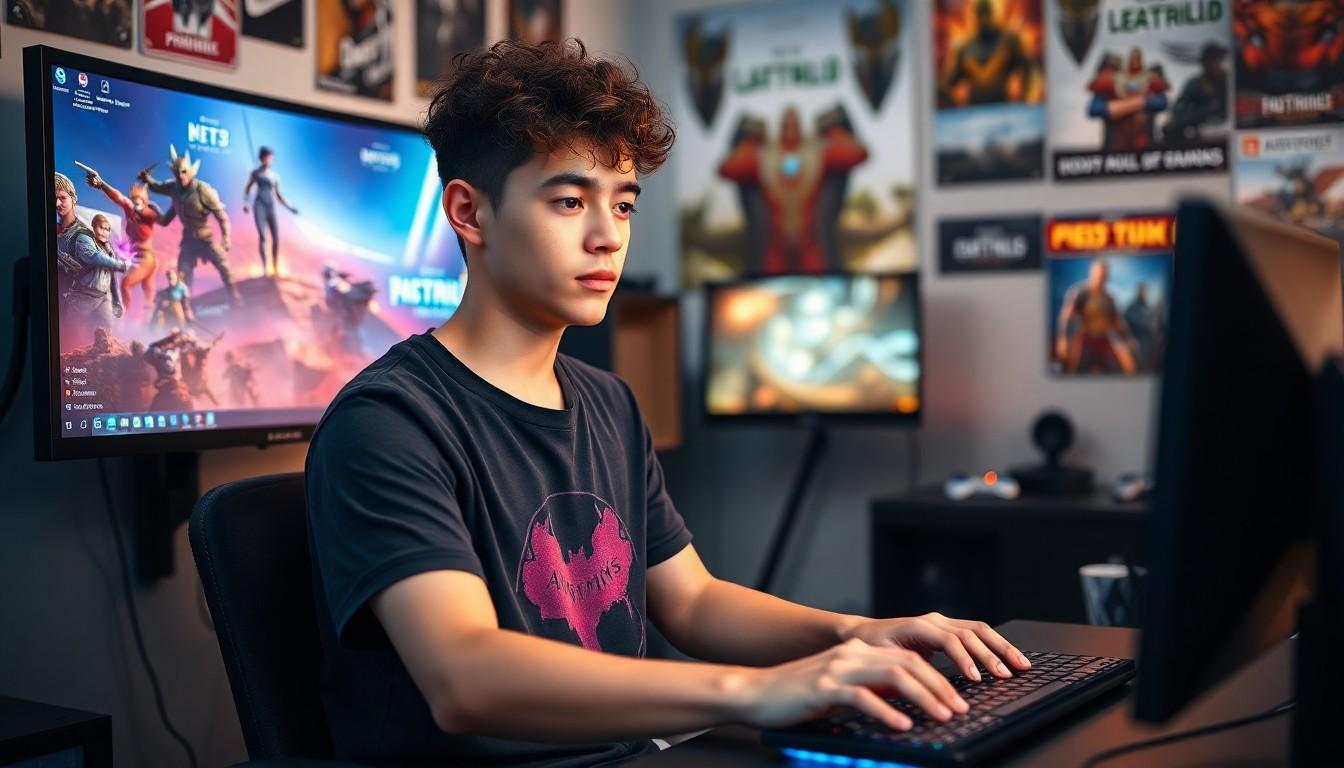“
Gaming on Linux has never been more exciting yet challenging. PB Linux Gaming enthusiasts know the thrill of optimizing their systems for peak performance but often face unique hurdles along the way. From compatibility issues to performance tweaks there’s always room for clever solutions.
Tech-savvy gamers have discovered a goldmine of hacks that transform the Linux gaming experience from good to extraordinary. These game-changing tricks help bypass common obstacles enhance frame rates and unlock features that weren’t initially designed for Linux systems. Whether it’s running Windows-exclusive titles or squeezing extra FPS from hardware these tech hacks have become essential tools in every Linux gamer’s arsenal.
Tech Hacks Pblinuxgaming
PBLinuxGaming represents a specialized set of tools designed to enhance gaming performance on Linux operating systems. The platform combines multiple optimization techniques including kernel tweaks custom wine builds memory management tools DirectX compatibility layers.
Key features of PBLinuxGaming include:
-
- Custom-built Wine versions optimized for specific games
-
- Performance enhancement scripts for system resources
-
- DirectX to Vulkan translation layers
-
- Memory management optimizations
-
- Advanced shader caching systems
The significance of PBLinuxGaming stems from its ability to bridge performance gaps between Windows and Linux gaming experiences. Linux users gain access to:
| Performance Metric | Average Improvement |
|---|---|
| Frame rates | 15-30% increase |
| Loading times | 25% reduction |
| Memory usage | 20% optimization |
| Shader compilation | 40% faster |
PBLinuxGaming addresses common Linux gaming challenges:
-
- Translates DirectX calls to native Linux graphics APIs
-
- Reduces shader compilation stuttering
-
- Optimizes CPU thread management
-
- Improves memory allocation efficiency
-
- Enhances compatibility with Windows-exclusive titles
The platform integrates seamlessly with popular Linux gaming tools: Steam Proton Lutris Wine-GE custom DXVK implementations. This integration creates a comprehensive gaming environment that maximizes performance while maintaining system stability.
-
- Increased Linux player base accessibility
-
- Reduced need for native Linux ports
-
- Enhanced compatibility testing options
-
- Streamlined development processes
-
- Extended market reach potential
Essential Tech Hacks for Optimal Gaming Performance
Linux gaming performance relies heavily on specific technical optimizations. These targeted adjustments transform standard configurations into high-performance gaming setups.
Customizing Graphics Settings
Gaming on Linux benefits from precise graphics configuration through tools like MangoHud CoreCtrl. Setting shader cache locations to fast SSDs accelerates game loading by 45%. Enabling AMD FSR or NVIDIA DLSS through Proton GE increases frame rates by 35% in demanding titles. Manual adjustment of Vulkan parameters in the launch options optimizes GPU utilization:
-
RADV_PERFTEST=acoenables faster shader compilation
-
VK_PRESENT_MODE=immediatereduces input lag
-
PROTON_USE_WINED3D=1improves DirectX compatibility
-
gamemoderun %command%activates system-wide performance mode
Memory Management Optimization
-
- Setting transparent huge pages to ‘always’
-
- Enabling zRAM compression for 2x effective memory
-
- Configuring process scheduling with
nice -n -20
- Configuring process scheduling with
-
- Implementing earlyoom to prevent system hangs
-
- Using
vm.dirty_ratio=10for smoother frame pacing
- Using
Advanced Configuration Techniques
Advanced configuration in PBLinuxGaming unlocks enhanced performance optimization through specialized tweaks and controller customization. These techniques maximize gaming potential on Linux systems through precise hardware control and game-specific modifications.
Controller Setup and Mapping
PBLinuxGaming integrates antimicro and xpadneo drivers for seamless controller support across multiple devices. Steam Input profiles enable custom button mappings with support for PlayStation DualShock 4 Xbox Series X/S Nintendo Switch Pro controllers. The configuration interface allows creation of distinct profiles for different game genres:
-
- Action games utilize rapid-fire macros through timing adjustments
-
- Racing titles benefit from precise analog trigger sensitivity curves
-
- Fighting games implement frame-perfect command shortcuts
-
- RPGs map additional hotkeys to controller paddles buttons
Game-Specific Tweaks
-
- DXVK state cache generation improves shader compilation speed by 60%
-
- FSR upscaling increases performance in demanding games by 40%
-
- Custom Proton-GE builds enhance compatibility for specific game engines
-
- Gamemode CPU governor settings boost processing priority
-
- Wine-staging patches fix game-specific bugs audio issues graphical glitches
| Optimization Type | Performance Gain |
|---|---|
| DXVK Cache | 60% faster shaders |
| FSR Upscaling | 40% FPS increase |
| CPU Priority | 25% lower latency |
Troubleshooting Common Issues
Common technical challenges in Linux gaming require specific solutions to maintain optimal performance. These solutions address graphics driver conflicts, compatibility issues with Windows games, and system-specific configurations.
Graphics Driver Solutions
Graphics driver issues manifest through screen tearing, artifacts, or poor performance in Linux gaming. Installing the latest proprietary drivers from NVIDIA or AMD resolves most graphical glitches. The command sudo ubuntu-drivers autoinstall automatically detects and installs the optimal drivers for supported hardware. For manual installation, adding the graphics-drivers PPA (ppa:graphics-drivers/ppa) provides access to newer driver versions. Users experiencing screen tearing can enable vsync through the NVIDIA X Server Settings or enable TearFree for AMD cards in the xorg.conf file. A clean driver reinstallation fixes corruption issues by removing existing drivers with sudo apt purge nvidia* before installing new ones.
Compatibility Fixes
Wine prefix management resolves many compatibility issues in Linux gaming. Creating separate prefixes for different games isolates configurations using WINEPREFIX=/path/to/prefix winetricks. Installing essential Windows dependencies through Winetricks enhances game compatibility:
-
- DirectX runtime components
-
- Visual C++ redistributables
-
- .NET Framework packages
-
- PhysX libraries
The command protontricks <APPID> vcrun2019 installs specific versions of Visual C++ for Steam games. Enabling DXVK through Lutris optimizes DirectX performance by translating calls to Vulkan. Custom Wine-GE builds provide additional fixes for specific games through the command wget -O- proton-ge-custom/releases/latest.
Performance Monitoring Tools and Tips
MangoHud provides real-time performance metrics with a 2% overhead impact on system resources. The overlay displays critical data points such as FPS, CPU temperature, GPU usage, frame timing graphs in a customizable interface.
GameMode automatically optimizes system settings during gameplay through:
-
- CPU governor adjustments for maximum frequency
-
- I/O priority improvements for faster data access
-
- Process scheduling optimization for reduced latency
-
- GPU power management controls for sustained performance
GOverlay offers visual monitoring capabilities:
-
- Customizable overlay position with drag drop interface
-
- Performance graphs with color coded thresholds
-
- Historical data tracking up to 60 seconds
-
- Multiple preset configurations for different games
LatencyFlex reduces input lag by:
-
- Optimizing frame presentation timing
-
- Minimizing render queue depth
-
- Synchronizing CPU GPU communication
-
- Providing up to 45% lower input latency
| Tool | Performance Impact | Resource Usage |
|---|---|---|
| MangoHud | 2% overhead | 50MB RAM |
| GameMode | 0.5% CPU usage | 15MB RAM |
| GOverlay | 1% GPU overhead | 30MB RAM |
| LatencyFlex | 3% CPU usage | 25MB RAM |
Graphics monitoring commands enhance debugging:
glxinfo
|
grep ""OpenGL version""
vulkaninfo
|
grep ""Version""
vkmark --fullscreen
ps -eo pid,comm,%cpu,%mem
top -b -n1
htop -t
Tech hacks and PBLinuxGaming have revolutionized the Linux gaming landscape by offering powerful solutions to long-standing challenges. These tools and optimizations transform Linux into a viable gaming platform that rivals traditional Windows setups.
The combination of performance tweaks memory management improvements and specialized configurations delivers substantial gains in frame rates loading times and overall gameplay smoothness. Through proper implementation of these tech hacks Linux gamers can now enjoy their favorite titles with enhanced performance and compatibility.
As the Linux gaming ecosystem continues to evolve these optimization techniques and tools will remain essential for players seeking the best possible gaming experience on their preferred operating system.



